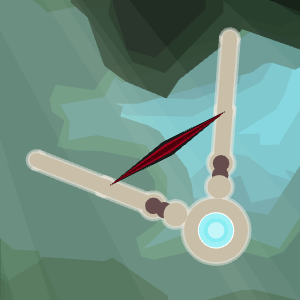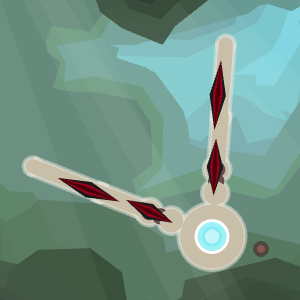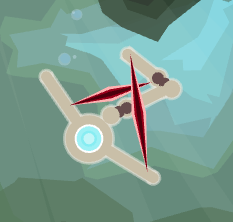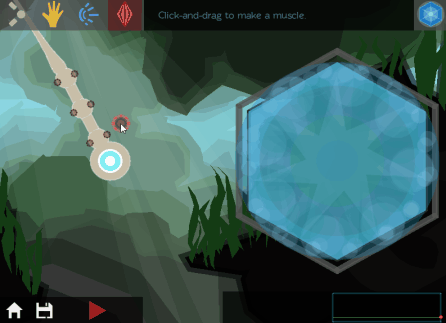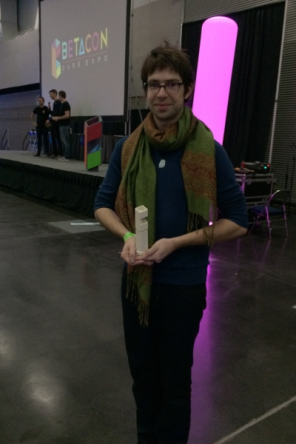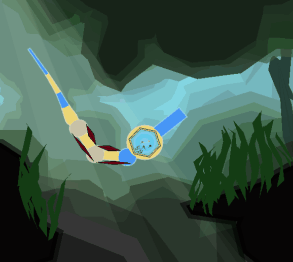Wicklog #4 - Betacon, intuitive mechanics, and the March for Science
Time is strange. It feels like the changes I make every day are small, but gradually they accumulate into something bigger than it seems like I could make. And then I realize how little time I have left, and the good feelings about that turn back to anxious work.Last weekend, I showcased Crescent Loom at the Portland Mercury’s new tech/gaming convention: Betacon. It was cool event for me for a few reasons:
1) Focus
It got me to focus on getting a polished build put together, fixing a lot of the UI things that I’d been putting off (e.g. finishing the design, seamlessly switching between body and brain editing, making an info panel for the neurons)
2) Feedback:
-
I thought that the scheme I was using for making connections between versus moving cells was elegant -- you click+drag versus click *on* the cell, respectively. It used a single button and didn’t require some kind of toolbar. HOWEVER, it was one of the most consistent points where people got tripped up while learning the game.
-
The most effective way to make your creature move has been to connect a muscle between two different limbs, like so:
But from the start, about half the people picking up the game for the first time would put their muscles down like this:
Which makes sense! It’s a lot more intuitive that a set of muscles would run up along an arm rather than, say, between the creature’s ankles. A better design for the game would be one where people’s natural intuition is the correct thing to do.
It just so happened that I’d also been wrestling with a different design problem; there wasn’t currently a good way to get a limb to turn in a specific direction on muscle activation; the muscles would tend to get bound-up since they didn’t wrap along with the limb:
SO! I decided to try and kill two birds with one stone and make muscle attachment points run up alongside each limb, rather than having a free-form “attach anything to anywhere” system. This has created a standardized way to place muscles that produces a predictable motion, and is far less likely to get bound up:
I’m pretty pleased with this solution, not gonna lie. Identifying problems and finding clever ways to solve them is one of the most fun processes in game dev. Of course, this raises its own problems (can you attach any hardpoint to any hardpoint?)...
3) AWARD
Crescent Loom won the Betacon award for “Most Innovative”! I’ve never won an award for my games before, so that was PRETTY SLICK.
I participated in the March for Science, and had a brief chat with a scientist/photographer named Tyler Hulett who put together a snapshot-documentary on the march. You can see it on Vimeo; my beautiful face is at the 5-minute mark.
Now, here’s the current to-do list on my desktop:
Write bi-weekly update
Write submission for indie game fund
Write submission for indiecade
Write up time estimate for feature list + KS rewards
Apply for food stamps
Churn through emails
Find possible grants to apply for.
You’ll note the lack of, y’know, actual development on this list. I am probably one of the slowest writers I know and there is SO MUCH writing you need to do in order to manage a game project and fund thyself. Ah well, another thing to learn how to do.
I once again see the benefit of working with other people/finding a writer/PR/publisher. I’m spread thin and that’s the area where I’m least-efficient. Grants especially require a specialized skillset that I simply don’t have. Problem is, even with the KS money, the project is already bare-bones budget-wise. So, dunno how that’ll turn out. Maybe I’ll just learn to write faster and care less about typeos.






